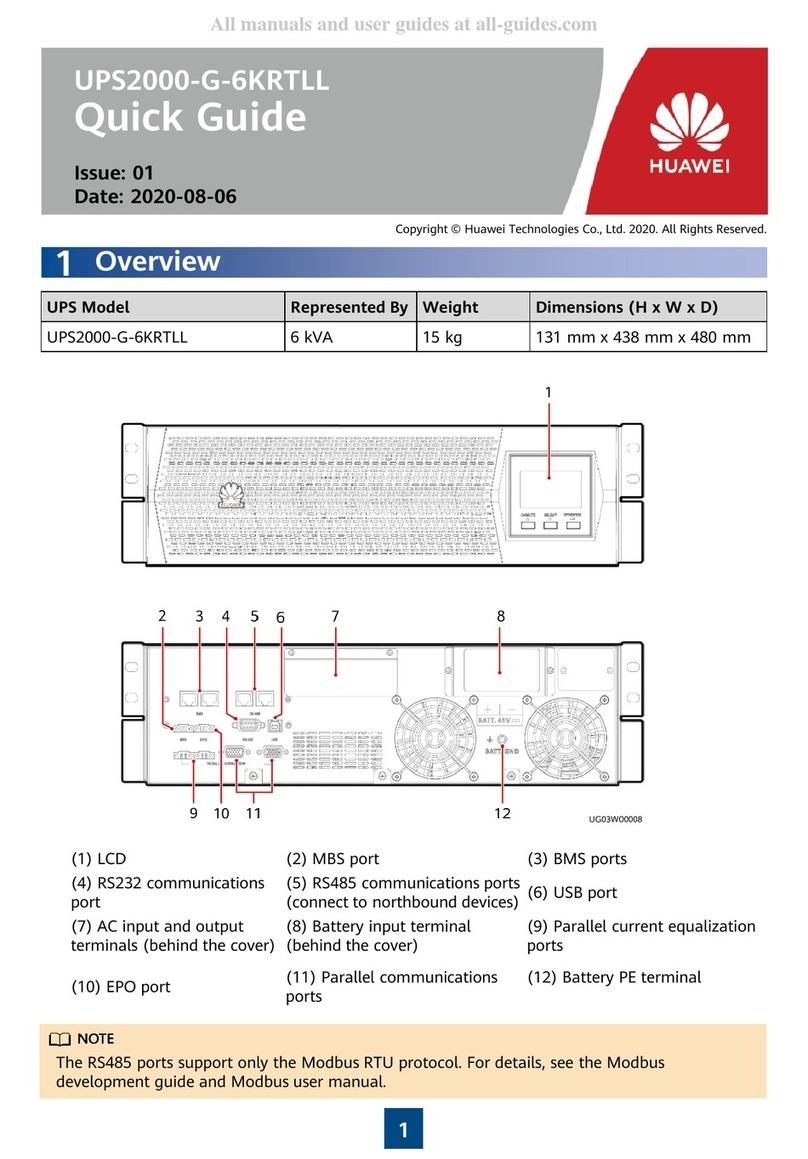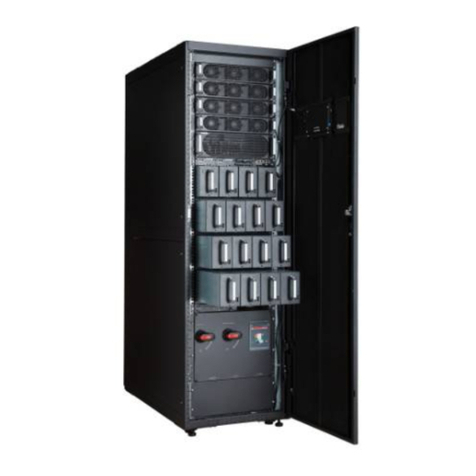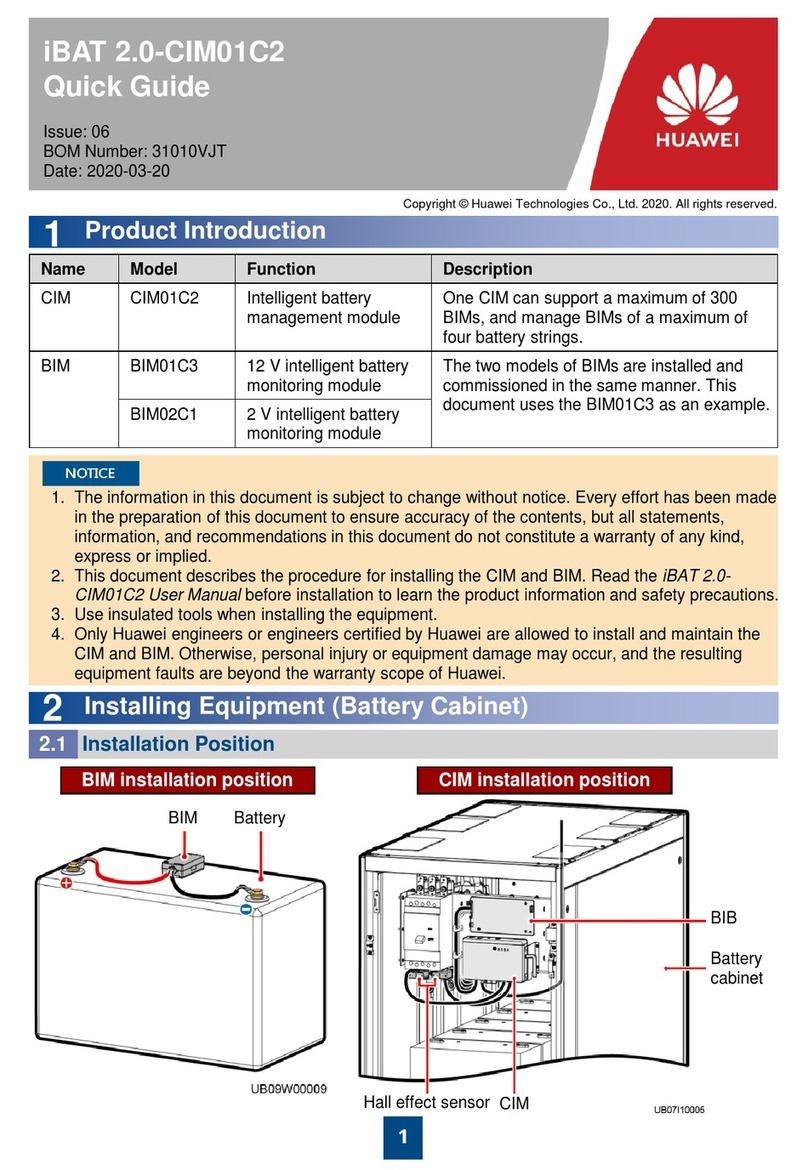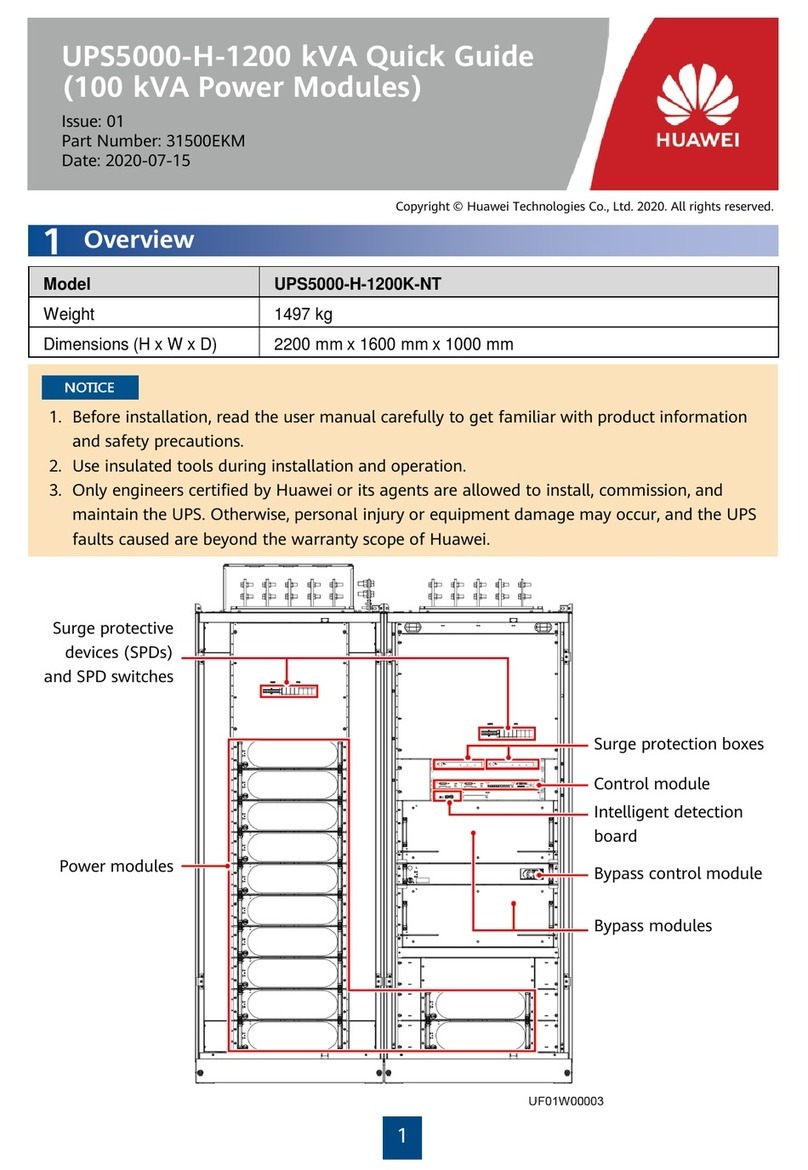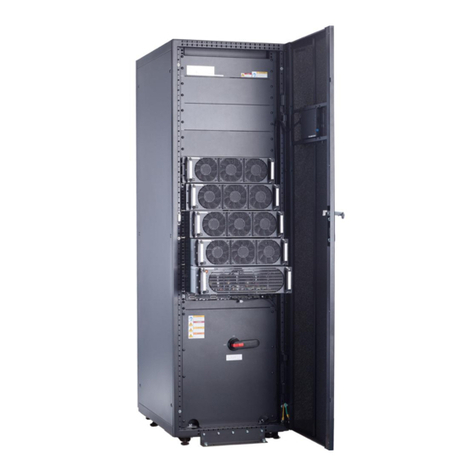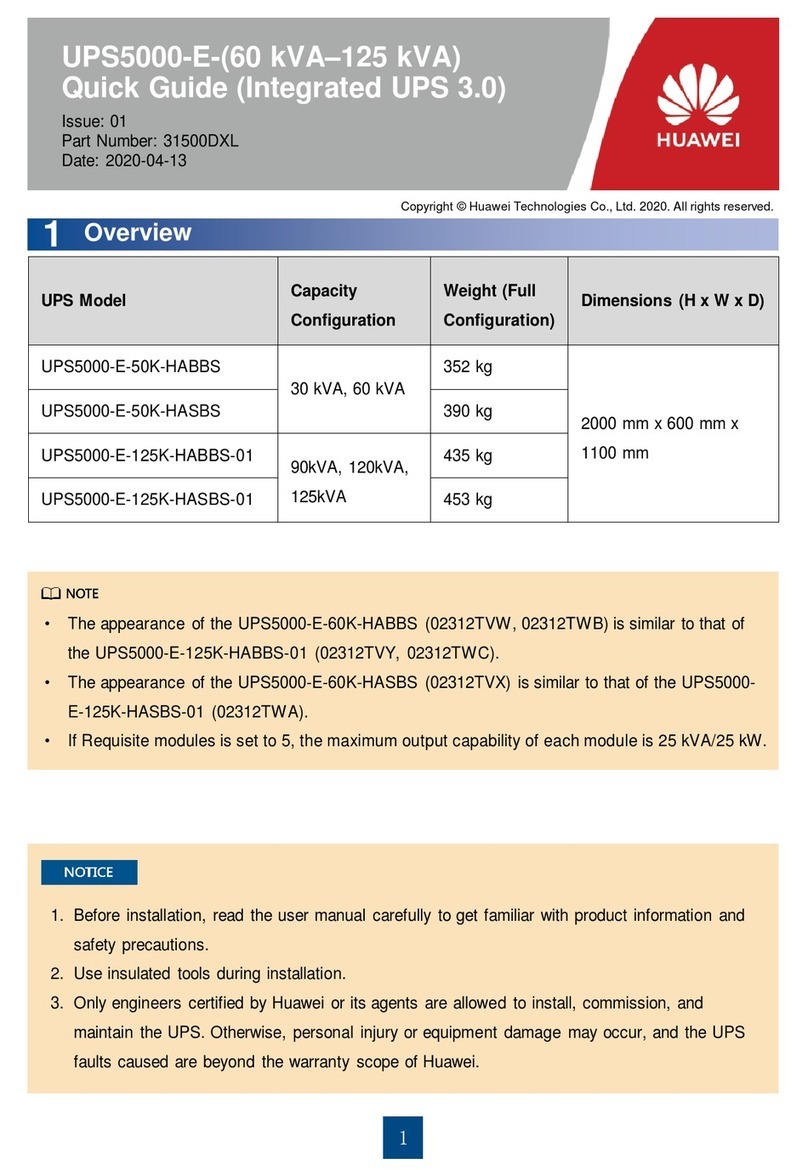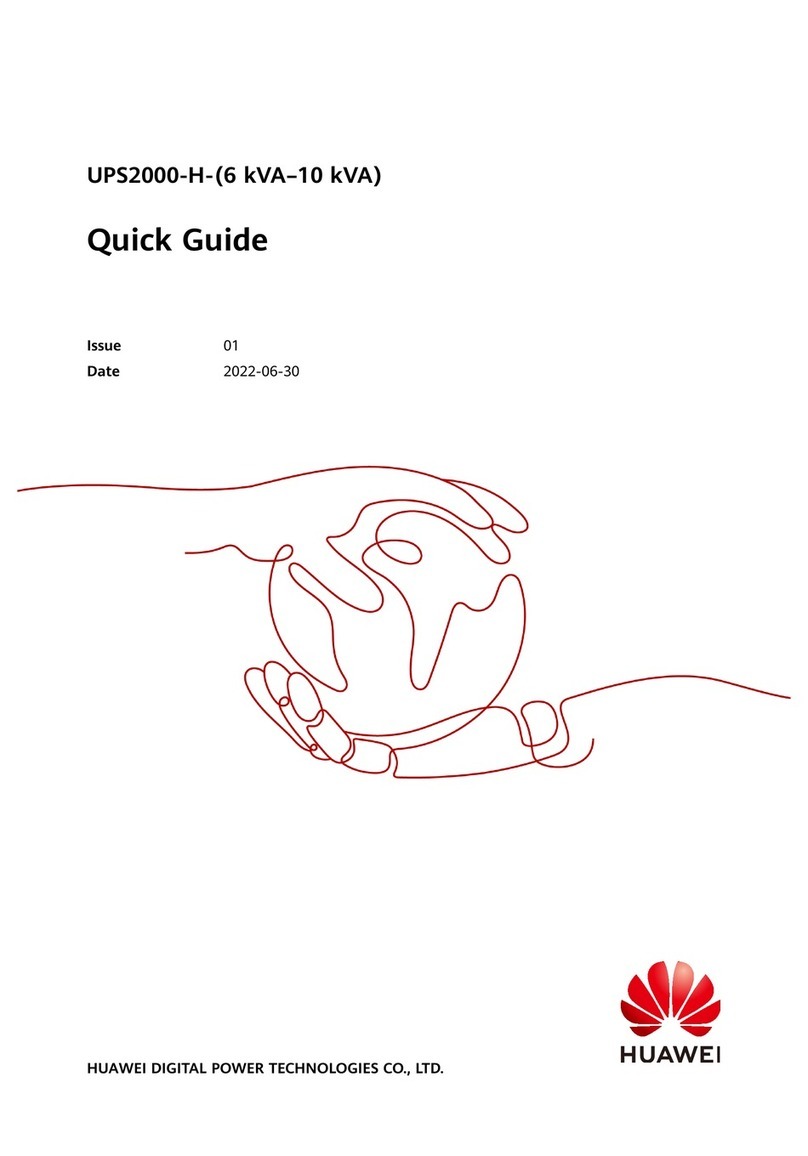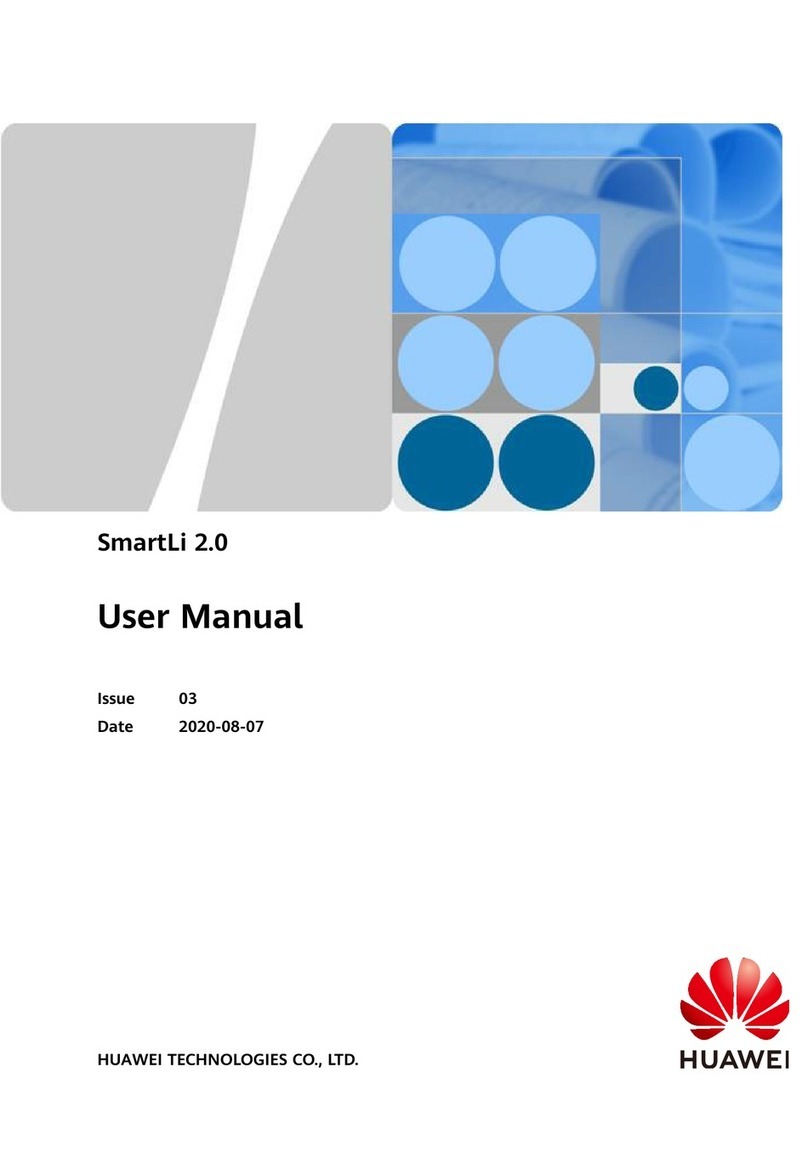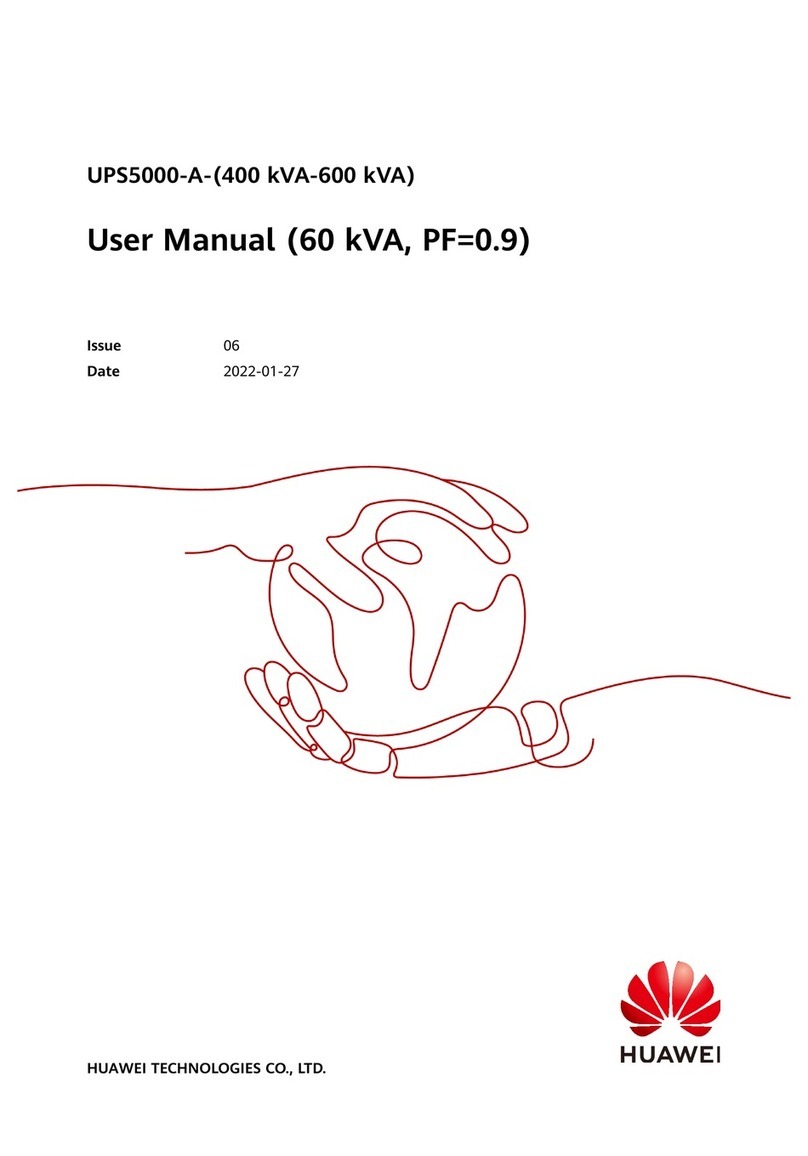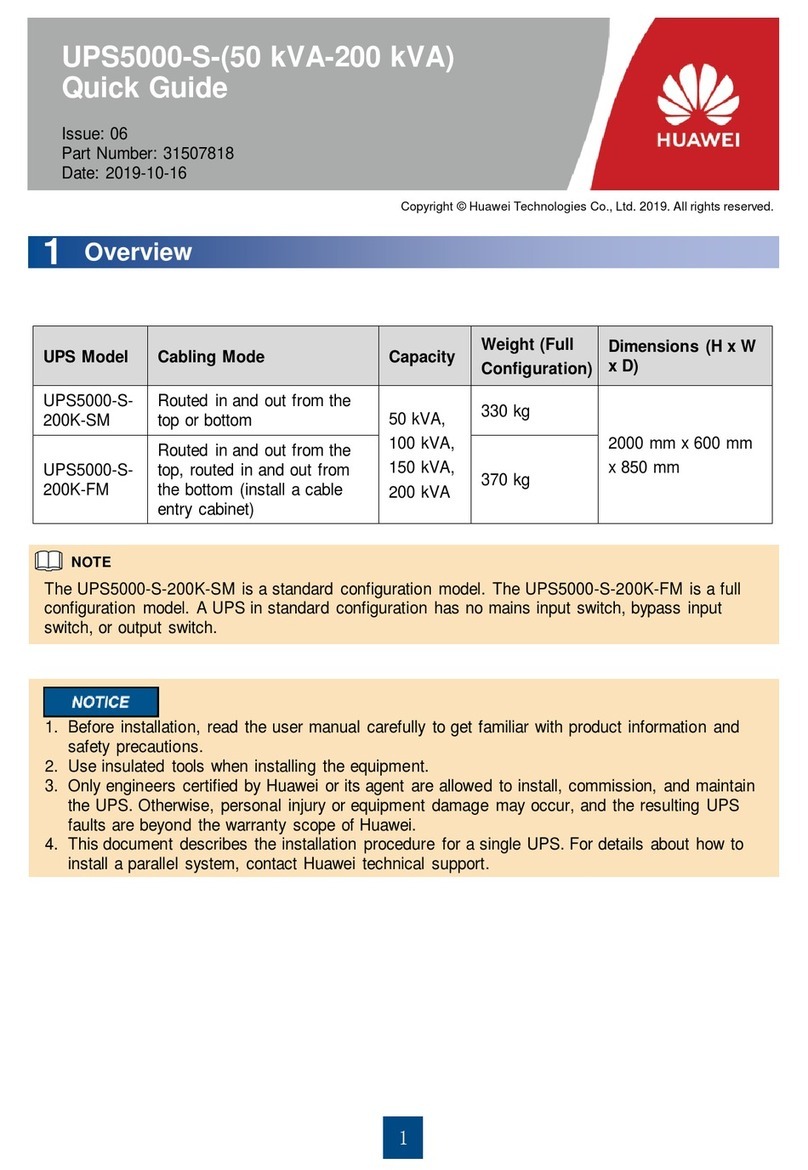5
b
Cabinet installation Neat arrangement
•The cabinet is securely installed
and does not tilt due to vibration.
•The adjacent cabinets are neatly
arranged and secured with
connecting kits.
Power cables and signal cables are
separated at a safe distance and
do not cross each other.
•Cable ties have no exposed
sharp edges.
•Cables are bound neatly and
properly.
•Both ends of a cable are
labeled. Labels are concise and
easy to understand.
Cable or copper bar
connections
•Bolts are tightened to the required
torque and marked in red and blue
after double-check.
•Battery cables or copper bars are
securely connected, the spring washers
are leveled properly for cables secured
by screws, and the cables are intact.
Post-installation Check
Grounding
•The resistance between the
cabinet ground bar and the
equipment room ground bar is
less than 0.1 ohm.
Pressure gauge
•If the pressure gauge pointer
at the front door of the
cabinet is obviously lower than
the initial position, contact
technical support.
•The cabinet is correctly
connected to the UPS.
•Battery cabinets in parallel
are correctly connected.
•The neutral wire is
correctly connected.
•Check whether there is a short
circuit between the positive,
neutral, and negative cables for
circuit breakers, between
copper bars, and between the
cables, copper bars, and
enclosure. If there is a short
circuit, check whether the
cables are damaged or short-
circuited. If yes, repair the
cables.
•There is no foreign matter
(such as copper wires and
screws) on the top of the
cabinet.
•There is no foreign matter on
the copper bar terminals.
•There is no foreign matter
around circuit breaker
terminals.
•There is no foreign matter on
the bottom plate of the
cabinet.
•There is no foreign matter on
the rear module subrack.
•After the BCU is removed, set a
multimeter to the DC voltage
mode and measure the voltage
between the uncoated part of the
battery cabinet and the positive
and negative terminals of
batteries respectively. If the
readings are less than 6 V DC, the
insulation is good.
Battery cable connections Short-circuit at the upstream and
downstream to circuit breakers Foreign matter cleaning
inside the cabinet
Insulation resistance of
output power cables
Insulation between battery
modules and the cabinet
Cover installation
•After verifying the installation,
reinstall all the covers.
•The battery cabinet output cables
are intact. The insulation resistance
of the positive, negative, and
neutral output cables to the ground
and that between the positive,
negative, and neutral output cables
are greater than 2 megohms (using
a 500 V megohm meter).
Do not remove the dust
cover before power-on.
Relative humidity: 5% RH–
95% RH (non-condensing)
•If the equipment will not be
powered on after installation,
take dustproof measures (for
example, use a dust cover) to
prevent dust buildup in the
equipment, which may corrode
the equipment. Remove the
dust cover only when the
equipment is ready for
operation.
•After the installation is complete,
take anti-condensation measures
and keep the air conditioner
running. Do not store the
equipment in an environment
where the temperature and
humidity are uncontrollable for a
long period of time. Otherwise,
the equipment may be damaged
due to condensation.
Sealing Cabinets
Transparent film
Sealing putty (with the
transparent film facing upward)
Paper protective film
1. Remove the paper protective film from the sealing putty and keep the transparent film.
2. Fill the gaps between the cables and the cabinets with the sealing putty. Ensure that the
transparent film faces upward.
Power-On
1
Start the BCU and press the POWER
ON/OFF button on the BCU of the
SmartLi for more than 2 seconds.
2
On the SmartLi LCD, set related
parameters on the Settings Wizards
screen.
Change
Order Indicator Status Description
1
Running indicator (green):
blinking at short intervals (on
for 0.25s and off for 0.25s)
The power button is pressed.
2
Running indicator (green): blinks
intermittently (on for 1s and off
for 4s)
Standby state. The SmartLi circuit
breaker cannot be switched on.
3
Running indicator (green): blinks
at super short intervals (on for
0.1s and then off for 0.1s)Fault
indicator (red): steady on
Standby state. The SmartLi circuit
breaker can be switched on. If the
fault indicator is steady red, a BCB
off alarm is displayed on the LCD
of the SmartLi, and no action is
required. The alarm will disappear
after the battery circuit breaker is
switched on.



